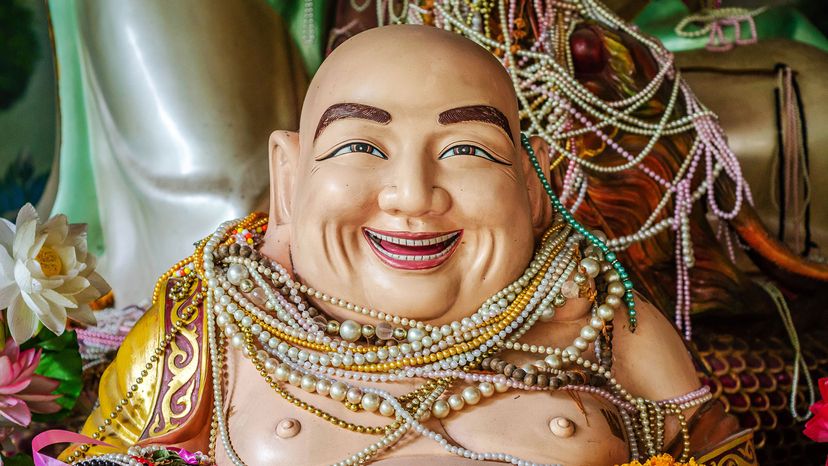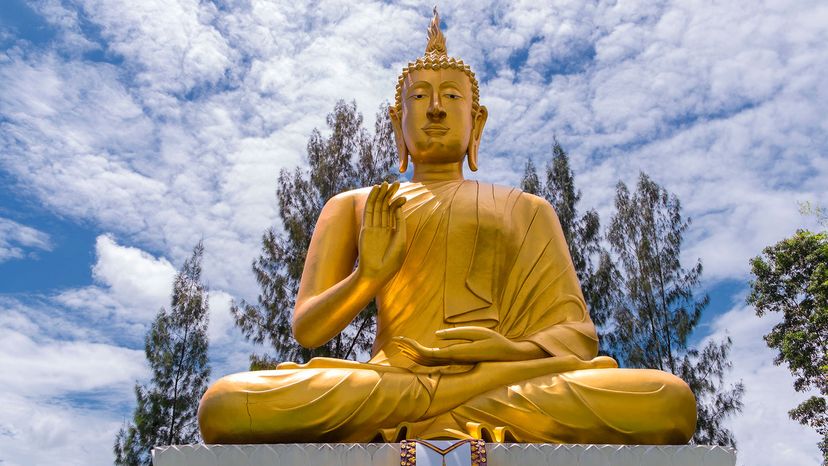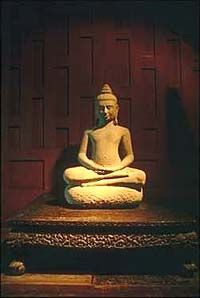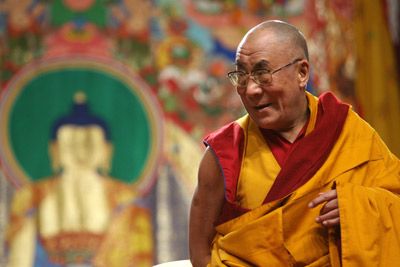
There he is, seated next to the cash register at your local Chinese restaurant. A shiny bronze statue of a pot-bellied, bald man with a laughing grin on his face, the same jolly fella immortalized in keychains, paperweights and other trinkets sold in Chinatown tourist shops.
That's the Buddha, right?
Advertisement
Nope, but you're in the right religious ballpark. Westerners can be forgiven for mistaking the ubiquitous chubby figure as the Buddha, since he's also called "the Laughing Buddha." But the true story behind the Laughing Buddha is nearly as complicated as Buddhism itself.
Denise Leidy is curator of Asian art at the Yale University Art Gallery and held the same position at the Metropolitan Museum of Art for 22 years. She's no stranger to the confusion over the Laughing Buddha statue.
"In Christianity, there's this one guy. So when people see this corpulent, fun guy, they think, 'That's the Buddha,' but it's not," says Leidy. "The Buddha, in the singular, is Siddhartha Gautama. But the Buddhist religion over time has become so complicated and has added multiple layers of deities, many of whom have multiple avatars. So it's gotten mind-boggling complicated and only crazy people like myself spend their lives figuring it out."
The Buddha, as Leidy mentioned, was a man named Siddhartha Gautama who lived around the 6th century B.C.E. in India. Born a wealthy prince, he chose to live as an ascetic in search of the meaning of existence, which he found while meditating for 49 days under the Bodhi tree.

After achieving nirvana, which is the escape from the endless cycle of suffering, death and rebirth, Siddhartha Gautama became Buddha or the "awakened one." Over the centuries, his teachings spread throughout India, into China, across Asia and eventually around the world. Today, there are an estimated 376 million followers of Buddhism worldwide.
Advertisement

